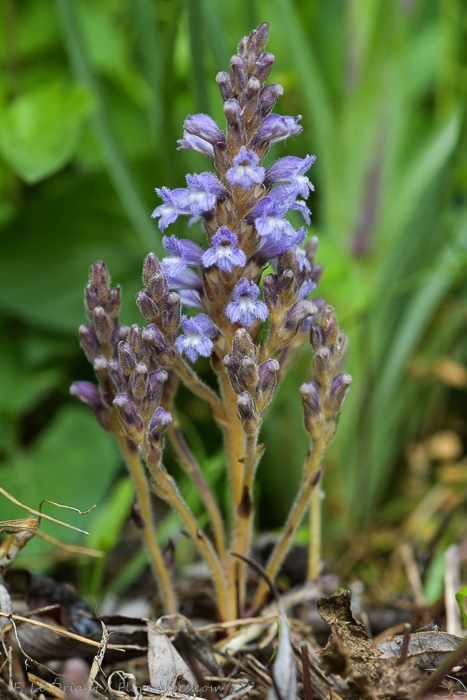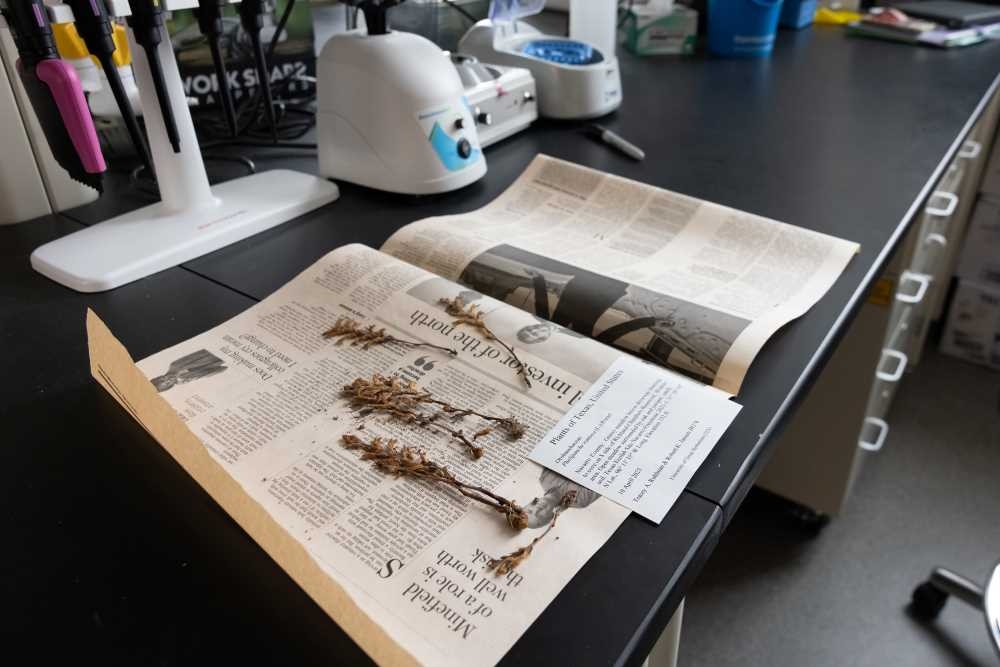Professor studies genetic secrets of invasive weed threatening USD 1.5 billion tomato industry. Adam Schneider is studying the root cause of a parasitic weed that has the potential to wreak havoc on California’s 11 million tonnes processing tomato industry.
 Schneider, University of Wisconsin-La Crosse assistant professor of biology, received a USD 52,680 research grant from California Tomato Research Institute to study the genetic material in branched broomrape, an invasive weed that is under the highest level of scrutiny by the California Department of Food and Agriculture.
Schneider, University of Wisconsin-La Crosse assistant professor of biology, received a USD 52,680 research grant from California Tomato Research Institute to study the genetic material in branched broomrape, an invasive weed that is under the highest level of scrutiny by the California Department of Food and Agriculture.
Despite its outward appearance as a delicate purple flower, branched broomrape is a menace in tomato farm fields where its seeds grow into the roots of host plants and suck out the nutrients. The problem is particularly troublesome in California where 95% of all processing tomatoes in the U.S. are grown. The weed, native to Eurasia but first discovered in the U.S. in 1890, can reduce crop yields by up to 80%, causing a significant expense to farmers and the state government. The weed has intermittently appeared in California tomato crops over the last century — sometimes with no reports for decades at a time. But more contemporary outbreaks of the weed in 2009, 2014 and 2017-23, have left farmers and policy makers puzzled about how to eliminate the plant for good.
Enter Schneider who has spent the last two years studying the genetic variability of branched broomrape, or scientifically known as Phelipanche ramosa. Just like any population of a particular species, be it giraffes or maple trees, have minor differences in characteristics within their species, so too does this weed. If Schneider can use these minor variations to identify some unique genetic subgroups of branched broomrape, these subgroups could provide clues regarding its ability to endure over a century and evade mitigation efforts. The crucial question on Schneider's mind is whether the current branched broomrape outbreak is a modern resurgence of these earlier outbreaks or if it has been reintroduced to California from other countries through contaminated seed stock.
Such knowledge could help determine the best management strategies to control the spread whether improving California agricultural hygiene practices or enforcing stricter controls on seedstock imports. "Regardless of what I find, the data will be useful in making better management decisions," says Schneider. "The direct economic and human benefits are personally motivating and complement other ongoing research projects in my lab focused on native plant species."
Based on Schneider’s previous CTRI-funded research, no clear genetic differences within the species have emerged so far, implying that despite the time gap between infected fields, all outbreaks may have originated from the same original seed introduction. In other words, the hypothesis that seeds were re-introduced to California from outside of the state is so far not supported. But with the renewed grant, Schneider can take a more comprehensive look at the current outbreak, incorporate new locations within California and internationally from 2023 and 2024, widening his sample sizes and therefore the validity of these results.
 Specifically, the new grant aims to:
Specifically, the new grant aims to:  Compare previously unstudied branched broomrape populations in Chile to the California populations.
Compare previously unstudied branched broomrape populations in Chile to the California populations. Add genetic data from seven new infected fields in 2023 or 2024 from California, to determine if those samples are characteristic of what is seen in other parts of the state and region.
Add genetic data from seven new infected fields in 2023 or 2024 from California, to determine if those samples are characteristic of what is seen in other parts of the state and region. Determine if published data on several Eurasian branched broomrape populations on different hosts can be analyzed together with the existing California data set.
Determine if published data on several Eurasian branched broomrape populations on different hosts can be analyzed together with the existing California data set. To get at the genetic makeup of the plant, Schneider and his research team use a machine with steel beads that allows them to grind up individual flowers from the parasite into tiny pieces so they can extract the DNA and purify it. From there the samples will go to a specialized DNA analysis lab at another campus.
Their study will look at 13 different genes within the branched broomrape genome. These 13 have the right level of variability so that differences within the species can be detected, a fact that was validated by a UWL molecular biology class earlier this year.
In addition to the California Tomato Research Institute grant, Schneider also received a UWL faculty research grant that will allow him to analyze branched broomrape samples across the U.S. Taxonomists have speculated that branched broomrape consists of two distinct species, one that is more threatening to crops. He will be comparing the genetic material in the pathogenic samples from California with samples from other parts of the U.S. outside of agricultural farm fields to determine if they are the same species.
These dried samples of branched broomrape will be pulverized in the grinder to extract DNA.
Why is this weed so pervasive?
A few of the ways that branched broomrape establishes itself make it particularly difficult to detect. Nearly all of its progress in destroying a plant happens underground. When it can be detected above ground, the plant has already been established. Moreover, the plant's maximum height is still low, making it nearly impossible to spot in a field of tomatoes. Each branched broomrape flower can produce tens of thousands of seeds that are smaller than a finely-ground piece of pepper, meaning it can spread extremely fast.
California has implemented strict control measures. Even one report of the plant will result in the need to destroy the entire tomato crop and no susceptible crops can be planted in the space for two years. This has led to low reporting among farmers. Read more about the weed risk assessment for branched broomrape from the USDA.
Source: uwlax.edu


 Schneider, University of Wisconsin-La Crosse assistant professor of biology, received a USD 52,680 research grant from
Schneider, University of Wisconsin-La Crosse assistant professor of biology, received a USD 52,680 research grant from 






























